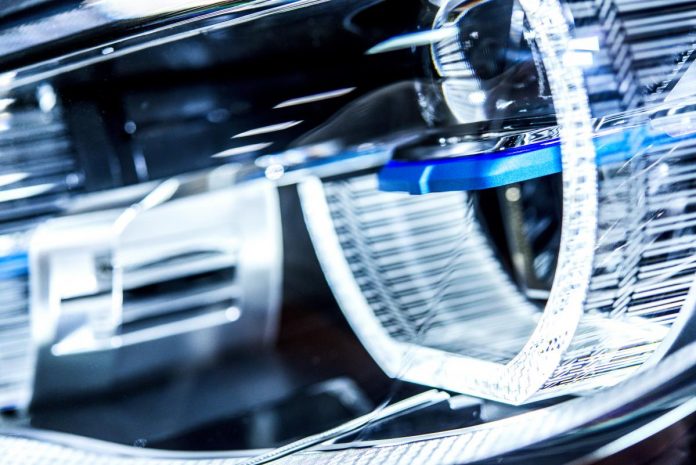By Fritz Lorek
There has hardly been any development in automotive lighting in the past few years that has generated so much interest, stirred so many emotions but also caused so much anxiety as laser light. In this car light blog, we focus on technology so we’ll be taking a sober approach and explain the processes involved.
First, let’s clear up a myth. Laser light is not, repeat not projected onto the road. It would be completely unsuitable as a means of illuminating a surface. A genuine laser spotlight has virtually no spread and could not even be seen by the driver. So don’t worry, we are not in Star Wars territory here. In automotive lighting applications, the laser beam does not leave the headlight. And there are safety precautions in place to ensure that even in the event of a crash there is no chance of laser light escaping.
So what does the laser actually do? Quite simply it causes a phosphor to emit light. Such phosphors should not be confused with the gas in fluorescent tubes. Instead, they are related to the coating on the inside of old television tubes or on radar screens. Although they are referred to as phosphors we are not talking about phosphor the element here. Elemental phosphor is not used in these applications because it is poisonous.
Just like a beam of electrons causes the front of an old TV tube to emit light, in this case, a laser beam causes light to be produced in a phosphor. The beam has a very small diameter so the light-emitting area is also extremely small. Experts talk about high luminance in such cases. And that’s something they have been dreaming about for a long time. The smaller the light-emitting area the more precisely the light can be distributed and directed to the right places. What’s more, the entire technology involved in laser light is extremely compact and therefore meets the needs of manufacturers for space-saving designs. And the laser itself can be located in a completely different area of the vehicle. A flexible light guide is then used to connect to the headlight.
The laser is based on semiconductor technology, so it is related to LEDs. Current designs feature three laser diodes, and their beams are focused on one point of the phosphor. When more powerful laser diodes become available a single diode should provide sufficient light for a headlight.
And by the way, the benefits of laser light are not really related to how much light is produced. After all, halogen lamps and xenon lamps are capable of producing as much light as the regulations allow. It is more to do with the small dimensions and the high luminance. Laser light gives designers and headlight manufacturers new-found freedom. Powerful high-beam headlights with a diameter of less than 1 ¼ inches are possible.
Article Courtesy: www.carlightblog.com








